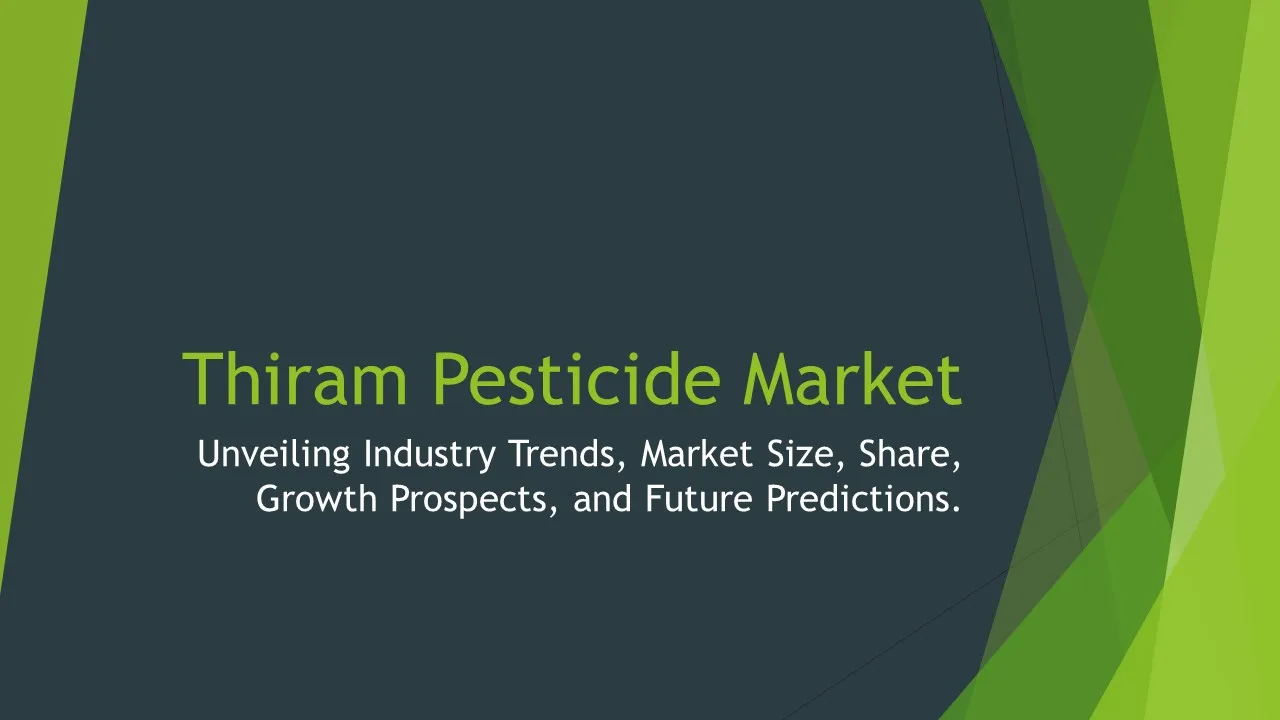Seed Coating Agent Sales
Seed Coating Agent Market Segments - by Product Type (Polymers, Colorants, Binders, Minerals, and Others), Application (Corn, Soybeans, Wheat, Cotton, and Others), Distribution Channel (Direct Sales, Distributors, Retail Stores, Online Sales, and Others), Ingredient Type (Chemical Agents, Biological Agents, Polymers, Fertilizers, and Others), and Region (North America, Europe, Asia Pacific, Latin America, Middle East & Africa) - Global Industry Analysis, Growth, Share, Size, Trends, and Forecast 2025-2035
- Report Preview
- Table Of Content
- Segments
- Methodology
Seed Coating Agent Sales Market Outlook
The global seed coating agent market is expected to reach USD 2.5 billion by 2035, growing at a CAGR of 6.5% during the forecast period from 2025 to 2035. This growth is primarily driven by the increasing demand for higher crop yields and the rising need for pest and disease management in agriculture. Additionally, advancements in coating technologies and the growing adoption of sustainable agricultural practices are contributing to the growth of this market. The focus on enhancing seed performance through innovative coating solutions, coupled with the rising emphasis on food security and sustainable farming practices worldwide, further supports the market expansion. Furthermore, the increasing investments in research and development activities to formulate efficient seed coating agents are likely to boost the market growth in the coming years.
Growth Factor of the Market
The growth of the seed coating agent market is significantly influenced by several factors that enhance agricultural productivity and sustainability. One of the primary drivers is the increasing global population, which necessitates higher food production levels. As farmers strive to meet this demand, they are turning to advanced agricultural solutions such as seed coating agents that can improve seed health and viability. Moreover, the rise in organic farming practices is promoting the use of biological seed coating agents, which can protect seeds without the adverse effects of synthetic chemicals. Another key factor contributing to market growth is the increasing awareness among farmers regarding the benefits of seed coatings, such as improved germination rates, enhanced seedling vigor, and better resistance to environmental stresses. Additionally, government initiatives and subsidies aimed at promoting sustainable agricultural practices are further propelling the market forward.
Key Highlights of the Market
- The global seed coating agent market is projected to grow at a CAGR of 6.5% from 2025 to 2035.
- Increasing adoption of sustainable agricultural practices is driving demand for seed coating agents.
- The market is witnessing technological advancements in coating formulations and application methods.
- The rise in global population and food demand is pushing farmers to adopt effective seed treatment solutions.
- Growing awareness about the benefits of seed coating agents among farmers is contributing to market expansion.
By Product Type
Polymers:
Polymers are a significant segment within the seed coating agent market, as they serve several critical functions in enhancing seed performance. These materials are primarily used for their ability to improve seed handling, protect seeds from mechanical damage during planting and provide a controlled release of nutrients and pesticides. As polymer technology advances, the development of biodegradable and environmentally friendly polymer coatings has gained traction, aligning with the global trend toward sustainability in agriculture. Farmers prefer polymer-coated seeds for their improved germination rates and better plant establishment, making this product type a crucial driver of market growth.
Colorants:
Colorants play an essential role in the seed coating process, as they enhance the visibility of seeds and provide essential information regarding seed treatment, such as species and treatment status. The use of colorants not only aids in seed identification but also helps in the monitoring of seed application during planting. As farmers seek to optimize planting efficiency, the demand for seed colorants is witnessing an upward trend. Moreover, advancements in dye technology that offer long-lasting, non-toxic colorants are further augmenting this segment's growth, ensuring that the coated seeds retain their visibility without harming the environment.
Binders:
Binders are critical components in seed coating formulations, as they ensure the adhesion of the coating materials to the seed surface. The growing demand for high-quality seed coatings that maintain their integrity under varying environmental conditions has increased the need for effective binders. Innovations in binder technologies that provide better adhesion, flexibility, and moisture retention properties are driving this segment's growth. As the agricultural sector continues to focus on improving seed performance and sustainability, the use of advanced binders in seed coatings is expected to expand significantly.
Minerals:
Minerals in seed coating agents are utilized to enhance the physical and chemical properties of seeds, providing them with additional nutrients that support early growth stages. The incorporation of minerals such as calcium, magnesium, and trace elements in seed coatings can improve seed vitality and contribute to better plant establishment. As the agricultural focus shifts towards optimizing seed performance and ensuring better nutrient availability, the demand for mineral-based seed coatings is anticipated to rise. Additionally, the increasing emphasis on precision agriculture and soil health further enhances the significance of mineral seed coatings in modern agriculture.
Others:
This category encompasses various other components used in seed coating formulations, which may include biological agents, fertilizers, and growth stimulants. These additives are formulated to provide specific benefits, such as enhancing seed germination, improving disease resistance, and promoting overall seedling vigor. The growing interest in integrated pest management and sustainable farming practices is driving the inclusion of biological and organic components in seed coatings. As consumers demand more eco-friendly agricultural products, the 'others' segment of seed coating agents is likely to witness substantial growth, catering to the evolving preferences of farmers.
By Application
Corn:
Corn is one of the largest segments in the seed coating agent market due to its significant role in global agriculture as a staple crop. The application of seed coating agents in corn seeds enhances germination rates and provides protection against pests and diseases prevalent during early growth stages. With advances in coating technologies, farmers are increasingly adopting polymer-based and biological seed coatings that align with sustainable farming practices. The rising demand for corn for food, feed, and fuel applications further underpins the growth of seed coating agents in this segment, as farmers seek to maximize their yield potential.
Soybeans:
Soybeans are another crucial application area for seed coating agents, as they are integral in the production of oil and protein-rich feed products. The use of seed coatings in soybean cultivation can significantly improve seedling establishment and enhance the plant's resilience to environmental stressors. Coating agents specifically designed for soybeans often incorporate nutrients and biopesticides that promote early growth and protect against soil-borne diseases. As the demand for soy products continues to rise, the seed coating agent market for soybeans is expected to experience robust growth, driven by the need for high-quality seed performance.
Wheat:
Wheat is a staple food crop that benefits significantly from seed coating treatments. Seed coating agents applied to wheat seeds can enhance germination, improve disease resistance, and provide essential nutrients during the critical early growth stages. The increasing focus on food security and the need for sustainable agricultural practices have led to the adoption of advanced seed coating technologies in wheat cultivation. As farmers look to increase yield and reduce losses from diseases and pests, the market for seed coating agents in the wheat application segment is anticipated to grow steadily in the coming years.
Cotton:
Cotton is another vital application for seed coating agents, particularly due to the challenges posed by pests and diseases in cotton cultivation. With the increasing adoption of integrated pest management strategies, seed coatings have become crucial in providing early protection to cotton seeds. These coatings can include insecticides, fungicides, and other biological agents that help safeguard seedlings from adverse environmental conditions. As the cotton industry faces growing pressures to enhance sustainability while maintaining high yields, the demand for effective seed coating solutions is expected to rise significantly.
Others:
The 'Others' category encompasses various applications of seed coating agents across different crops, including canola, rice, and various vegetables. Each crop has unique challenges, and seed coating agents can be tailored to address specific needs, such as enhancing germination rates, improving seedling vigor, and providing pest and disease resistance. The increasing diversity in agricultural practices and crop cultivation is driving the growth of seed coating agents across these varied applications. As farmers seek to optimize their operations and enhance crop performance, the demand for seed coating agents in these additional applications is anticipated to increase.
By Distribution Channel
Direct Sales:
Direct sales represent a significant distribution channel for seed coating agents, as manufacturers engage directly with farmers and agricultural businesses. This approach allows for personalized service and tailored solutions that meet specific customer needs. Direct sales also facilitate knowledge sharing about new technologies and products, enabling farmers to make informed decisions regarding their seed treatments. As the agricultural market continues to evolve, companies are increasingly focusing on developing robust direct sales strategies to enhance customer relationships and expand their market reach.
Distributors:
Distributors play a crucial role in the seed coating agent market by acting as intermediaries between manufacturers and end-users. They help increase the accessibility of products to farmers, especially in remote areas where direct access to manufacturers may be limited. Distributors also offer services like warehousing, logistics, and local market knowledge, which are vital for efficient product delivery. As the demand for seed coating agents continues to grow, distributors are expected to strengthen their networks and partnerships to better serve agricultural communities and enhance product availability.
Retail Stores:
Retail stores are increasingly becoming significant distribution channels for seed coating agents, as they provide farmers with convenient access to various agricultural products. These stores often stock a diverse range of seed treatments, enabling farmers to compare options and make informed purchasing decisions. Additionally, retail stores often serve as hubs for agricultural education, offering farmers insights into the latest seed coating technologies and their benefits. The growing trend toward local sourcing and the desire for immediate product availability are driving the expansion of retail channels in the seed coating agent market.
Online Sales:
Online sales are rapidly gaining traction as a distribution channel for seed coating agents, reflecting the broader shift toward digital commerce in agriculture. E-commerce platforms offer farmers the convenience of browsing and purchasing products from the comfort of their homes, saving time and resources. The rise of online sales is further supported by the increasing availability of detailed product information, customer reviews, and digital marketing strategies that enhance farmer awareness of available seed treatment options. As internet penetration and digital literacy improve in rural areas, the online sales channel for seed coating agents is expected to witness significant growth.
Others:
The 'Others' category encompasses various alternative distribution channels for seed coating agents, including agricultural cooperatives and specialty retailers. These channels often cater to niche markets and provide unique seed treatment options that may not be available through traditional distribution methods. As farmers increasingly seek specialized solutions tailored to their specific crops and conditions, these alternative channels are gaining prominence. The diversification of distribution strategies in the seed coating agent market is expected to support overall market growth, ensuring that farmers have access to the most suitable products for their needs.
By Ingredient Type
Chemical Agents:
Chemical agents are widely used in the formulation of seed coating agents, providing essential functionalities such as pest control, disease prevention, and enhanced seed performance. These agents can include insecticides, fungicides, and growth regulators that protect seeds and promote healthy seedling development. While the demand for chemical agents is robust, there is an increasing focus on developing safer and more environmentally friendly alternatives that do not compromise productivity. As regulatory frameworks shift and consumer preferences change, the market for chemical agents in seed coatings is likely to evolve towards more sustainable options.
Biological Agents:
The incorporation of biological agents in seed coating formulations is gaining traction due to the growing emphasis on sustainable agriculture and organic farming practices. Biological agents, such as beneficial microorganisms and natural plant extracts, help enhance seed germination, improve plant health, and provide natural pest protection. As farmers become more aware of the environmental benefits of biological seed treatments, the demand for these agents is expected to increase significantly. This shift towards biological solutions reflects a broader trend in agriculture, where sustainability and eco-friendliness are becoming paramount in crop management practices.
Polymers:
Polymers serve a dual purpose in seed coating formulations, acting as both binding agents and protective layers for seeds. The use of polymers in seed coatings enhances the durability of coatings and provides a controlled release of nutrients and active ingredients. With advancements in polymer technology, there is a growing focus on developing biodegradable and environmentally friendly alternatives that minimize the ecological footprint of seed treatments. As sustainability considerations become increasingly important in agriculture, the demand for polymer-based seed coatings is likely to rise, contributing to the market's growth.
Fertilizers:
Fertilizers incorporated into seed coatings are designed to provide essential nutrients during the critical early growth stages of plants. These fertilizers help improve seedling vigor, enhance nutrient uptake, and promote healthy root development. The use of nutrient-rich seed coatings is particularly beneficial in areas with nutrient-deficient soils. As farmers seek to maximize crop yields and ensure optimal growth conditions, the demand for fertilizer-enhanced seed coatings is anticipated to grow. Additionally, the trend towards precision agriculture, which focuses on delivering the right nutrients at the right time, is likely to further propel this segment of the seed coating agent market.
Others:
The 'Others' category comprises various additional ingredient types used in seed coating formulations, including growth stimulants and surfactants. These ingredients can enhance seed performance by regulating physiological processes and improving the adhesion of coatings to seeds. As the agricultural landscape evolves, there is a growing interest in formulating seed coatings with a wider range of beneficial ingredients that cater to specific crop needs and environmental conditions. As farmers seek innovative solutions that provide multiple benefits, the 'Others' category in the seed coating agent market is expected to witness considerable growth.
By Region
The North American region holds a significant share of the global seed coating agent market, driven primarily by the advanced agricultural practices and technological innovations prevalent in the region. The market in North America is projected to grow at a CAGR of 7.0% from 2025 to 2035, fueled by the increasing adoption of precision farming techniques and the growing focus on enhancing crop yields. Additionally, the presence of key players in the region and the robust research and development initiatives aimed at producing effective seed coating solutions contribute to the market's positive outlook. Furthermore, the rising demand for sustainable agricultural practices among American farmers is expected to propel the growth of environmentally friendly seed coating agents in the region.
In Europe, the seed coating agent market is also witnessing steady growth, supported by stringent regulations promoting sustainable agricultural practices and the increasing consumer demand for organic products. The European market is characterized by a shift towards biological seed treatments and innovative coating technologies that enhance seed performance while minimizing environmental impact. As European farmers adapt to changing regulatory landscapes and consumer preferences, the market for seed coating agents in the region is expected to expand in response to the growing focus on sustainability and agricultural efficiency. Overall, regional dynamics will play a crucial role in shaping the future of the seed coating agent market globally.
Opportunities
There are numerous opportunities within the seed coating agent market that can be leveraged to drive growth in the coming years. One significant opportunity lies in the rising demand for organic and sustainable agricultural practices. As consumers become more conscious of the environmental impact of farming, there is a growing inclination towards organic farming, which often requires the use of biological seed coatings. Companies that invest in research and development to create innovative, eco-friendly seed coating solutions will likely find a growing customer base eager to adopt these products. Furthermore, partnerships with agricultural cooperatives and initiatives promoting sustainable farming methods can enhance market penetration and brand visibility.
Another key opportunity in the seed coating agent market is the advent of precision agriculture technologies. The integration of data analytics, IoT, and AI into farming practices allows for more tailored seed treatments that meet specific agronomic needs. By developing seed coating agents that are compatible with precision agriculture initiatives, companies can create targeted solutions that optimize seed performance and improve overall crop yields. Additionally, as emerging markets continue to develop their agricultural sectors, there will be a rising demand for effective seed treatment solutions, presenting a lucrative opportunity for expansion into these regions.
Threats
Despite the promising growth prospects of the seed coating agent market, several threats could impede its progress. One of the primary challenges is the increasing regulatory scrutiny surrounding the use of chemical agents in agriculture. As governments and regulatory bodies worldwide impose stricter regulations on chemical pesticides and additives, companies may face hurdles in product development and approval processes. This could lead to increased compliance costs and delays in bringing new products to market, ultimately impacting profitability. Additionally, the rising trend towards organic farming may limit the market for conventional chemical-based seed coatings, necessitating a shift towards developing more sustainable alternatives.
Another significant threat to the seed coating agent market is the growing concern over environmental and health risks associated with synthetic chemicals used in agriculture. Public perception regarding the safety of chemical applications can influence farmer purchasing decisions, leading to a preference for organic or biological alternatives. This shift in consumer sentiment may challenge companies to adapt their product offerings and marketing strategies to align with changing expectations. Maintaining transparency about ingredient safety and efficacy will be crucial for companies operating in this space to mitigate potential backlash and retain customer trust.
Competitor Outlook
- BASF SE
- Syngenta AG
- Bayer AG
- FMC Corporation
- ADAMA Agricultural Solutions Ltd.
- Nufarm Limited
- Nippon Soda Co., Ltd.
- UPL Limited
- Plant Health Care plc
- Koppert Biological Systems
- Clariant AG
- Sumitomo Chemical Co., Ltd.
- AgroChem Inc.
- Valent U.S.A. Corporation
- DSM Nutritional Products
The competitive landscape of the seed coating agent market is characterized by the presence of several key players who are actively engaged in research and development, product innovation, and strategic partnerships. Companies like BASF SE and Syngenta AG have established themselves as leaders in the agricultural solutions market, offering a diverse range of seed coating agents tailored to meet the specific needs of various crops. These industry giants are leveraging their extensive research capabilities and technological advancements to develop innovative seed coatings that enhance seed performance while aligning with sustainability goals. As the competition intensifies, companies are focusing on differentiating their products through advanced formulations and eco-friendly solutions, ensuring they remain relevant in the evolving agricultural landscape.
In addition to established players, the seed coating agent market also features several emerging companies that are gaining traction by focusing on niche markets and developing specialized seed treatment solutions. For instance, firms like Koppert Biological Systems and Plant Health Care plc are leading the charge in biological seed coatings, offering solutions that enhance seed germination and protect against pests using natural agents. These companies are capitalizing on the growing consumer demand for sustainable and organic farming practices, positioning themselves as preferred suppliers for environmentally conscious farmers. The emergence of such companies indicates a shift in market dynamics, where innovation and sustainability become key differentiators in attracting customers.
Key players in the seed coating agent market are also engaging in strategic collaborations and partnerships to enhance their product offerings and expand their market presence. For example, collaborations between agricultural research institutions and seed coating manufacturers are fostering innovation, leading to the development of advanced coating technologies that improve seed health and performance. Additionally, mergers and acquisitions within the industry are allowing companies to diversify their portfolios and enhance their capabilities in seed treatment solutions. As the seed coating agent market continues to evolve, maintaining a competitive edge through strategic initiatives and a commitment to sustainability will be essential for long-term success.
1 Appendix
- 1.1 List of Tables
- 1.2 List of Figures
2 Introduction
- 2.1 Market Definition
- 2.2 Scope of the Report
- 2.3 Study Assumptions
- 2.4 Base Currency & Forecast Periods
3 Market Dynamics
- 3.1 Market Growth Factors
- 3.2 Economic & Global Events
- 3.3 Innovation Trends
- 3.4 Supply Chain Analysis
4 Consumer Behavior
- 4.1 Market Trends
- 4.2 Pricing Analysis
- 4.3 Buyer Insights
5 Key Player Profiles
- 5.1 BASF SE
- 5.1.1 Business Overview
- 5.1.2 Products & Services
- 5.1.3 Financials
- 5.1.4 Recent Developments
- 5.1.5 SWOT Analysis
- 5.2 Bayer AG
- 5.2.1 Business Overview
- 5.2.2 Products & Services
- 5.2.3 Financials
- 5.2.4 Recent Developments
- 5.2.5 SWOT Analysis
- 5.3 Clariant AG
- 5.3.1 Business Overview
- 5.3.2 Products & Services
- 5.3.3 Financials
- 5.3.4 Recent Developments
- 5.3.5 SWOT Analysis
- 5.4 Syngenta AG
- 5.4.1 Business Overview
- 5.4.2 Products & Services
- 5.4.3 Financials
- 5.4.4 Recent Developments
- 5.4.5 SWOT Analysis
- 5.5 UPL Limited
- 5.5.1 Business Overview
- 5.5.2 Products & Services
- 5.5.3 Financials
- 5.5.4 Recent Developments
- 5.5.5 SWOT Analysis
- 5.6 AgroChem Inc.
- 5.6.1 Business Overview
- 5.6.2 Products & Services
- 5.6.3 Financials
- 5.6.4 Recent Developments
- 5.6.5 SWOT Analysis
- 5.7 Nufarm Limited
- 5.7.1 Business Overview
- 5.7.2 Products & Services
- 5.7.3 Financials
- 5.7.4 Recent Developments
- 5.7.5 SWOT Analysis
- 5.8 FMC Corporation
- 5.8.1 Business Overview
- 5.8.2 Products & Services
- 5.8.3 Financials
- 5.8.4 Recent Developments
- 5.8.5 SWOT Analysis
- 5.9 Nippon Soda Co., Ltd.
- 5.9.1 Business Overview
- 5.9.2 Products & Services
- 5.9.3 Financials
- 5.9.4 Recent Developments
- 5.9.5 SWOT Analysis
- 5.10 Plant Health Care plc
- 5.10.1 Business Overview
- 5.10.2 Products & Services
- 5.10.3 Financials
- 5.10.4 Recent Developments
- 5.10.5 SWOT Analysis
- 5.11 DSM Nutritional Products
- 5.11.1 Business Overview
- 5.11.2 Products & Services
- 5.11.3 Financials
- 5.11.4 Recent Developments
- 5.11.5 SWOT Analysis
- 5.12 Valent U.S.A. Corporation
- 5.12.1 Business Overview
- 5.12.2 Products & Services
- 5.12.3 Financials
- 5.12.4 Recent Developments
- 5.12.5 SWOT Analysis
- 5.13 Koppert Biological Systems
- 5.13.1 Business Overview
- 5.13.2 Products & Services
- 5.13.3 Financials
- 5.13.4 Recent Developments
- 5.13.5 SWOT Analysis
- 5.14 Sumitomo Chemical Co., Ltd.
- 5.14.1 Business Overview
- 5.14.2 Products & Services
- 5.14.3 Financials
- 5.14.4 Recent Developments
- 5.14.5 SWOT Analysis
- 5.15 ADAMA Agricultural Solutions Ltd.
- 5.15.1 Business Overview
- 5.15.2 Products & Services
- 5.15.3 Financials
- 5.15.4 Recent Developments
- 5.15.5 SWOT Analysis
- 5.1 BASF SE
6 Market Segmentation
- 6.1 Seed Coating Agent Sales Market, By Application
- 6.1.1 Corn
- 6.1.2 Soybeans
- 6.1.3 Wheat
- 6.1.4 Cotton
- 6.1.5 Others
- 6.2 Seed Coating Agent Sales Market, By Product Type
- 6.2.1 Polymers
- 6.2.2 Colorants
- 6.2.3 Binders
- 6.2.4 Minerals
- 6.2.5 Others
- 6.3 Seed Coating Agent Sales Market, By Ingredient Type
- 6.3.1 Chemical Agents
- 6.3.2 Biological Agents
- 6.3.3 Polymers
- 6.3.4 Fertilizers
- 6.3.5 Others
- 6.4 Seed Coating Agent Sales Market, By Distribution Channel
- 6.4.1 Direct Sales
- 6.4.2 Distributors
- 6.4.3 Retail Stores
- 6.4.4 Online Sales
- 6.4.5 Others
- 6.1 Seed Coating Agent Sales Market, By Application
7 Competitive Analysis
- 7.1 Key Player Comparison
- 7.2 Market Share Analysis
- 7.3 Investment Trends
- 7.4 SWOT Analysis
8 Research Methodology
- 8.1 Analysis Design
- 8.2 Research Phases
- 8.3 Study Timeline
9 Future Market Outlook
- 9.1 Growth Forecast
- 9.2 Market Evolution
10 Geographical Overview
- 10.1 Europe - Market Analysis
- 10.1.1 By Country
- 10.1.1.1 UK
- 10.1.1.2 France
- 10.1.1.3 Germany
- 10.1.1.4 Spain
- 10.1.1.5 Italy
- 10.1.1 By Country
- 10.2 Asia Pacific - Market Analysis
- 10.2.1 By Country
- 10.2.1.1 India
- 10.2.1.2 China
- 10.2.1.3 Japan
- 10.2.1.4 South Korea
- 10.2.1 By Country
- 10.3 Latin America - Market Analysis
- 10.3.1 By Country
- 10.3.1.1 Brazil
- 10.3.1.2 Argentina
- 10.3.1.3 Mexico
- 10.3.1 By Country
- 10.4 North America - Market Analysis
- 10.4.1 By Country
- 10.4.1.1 USA
- 10.4.1.2 Canada
- 10.4.1 By Country
- 10.5 Middle East & Africa - Market Analysis
- 10.5.1 By Country
- 10.5.1.1 Middle East
- 10.5.1.2 Africa
- 10.5.1 By Country
- 10.6 Seed Coating Agent Sales Market by Region
- 10.1 Europe - Market Analysis
11 Global Economic Factors
- 11.1 Inflation Impact
- 11.2 Trade Policies
12 Technology & Innovation
- 12.1 Emerging Technologies
- 12.2 AI & Digital Trends
- 12.3 Patent Research
13 Investment & Market Growth
- 13.1 Funding Trends
- 13.2 Future Market Projections
14 Market Overview & Key Insights
- 14.1 Executive Summary
- 14.2 Key Trends
- 14.3 Market Challenges
- 14.4 Regulatory Landscape
Segments Analyzed in the Report
The global Seed Coating Agent Sales market is categorized based on
By Product Type
- Polymers
- Colorants
- Binders
- Minerals
- Others
By Application
- Corn
- Soybeans
- Wheat
- Cotton
- Others
By Distribution Channel
- Direct Sales
- Distributors
- Retail Stores
- Online Sales
- Others
By Ingredient Type
- Chemical Agents
- Biological Agents
- Polymers
- Fertilizers
- Others
By Region
- North America
- Europe
- Asia Pacific
- Latin America
- Middle East & Africa
Key Players
- BASF SE
- Syngenta AG
- Bayer AG
- FMC Corporation
- ADAMA Agricultural Solutions Ltd.
- Nufarm Limited
- Nippon Soda Co., Ltd.
- UPL Limited
- Plant Health Care plc
- Koppert Biological Systems
- Clariant AG
- Sumitomo Chemical Co., Ltd.
- AgroChem Inc.
- Valent U.S.A. Corporation
- DSM Nutritional Products
- Publish Date : Jan 20 ,2025
- Report ID : AG-549
- No. Of Pages : 100
- Format : |
- Ratings : 4.5 (110 Reviews)









